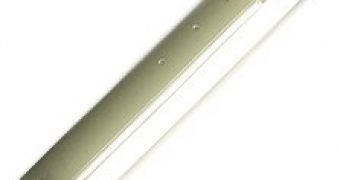You can find them mostly anywhere today, they are highly efficient, give off a pleasant white light and, for some strange reasons, people always call them neon lights. Fluorescent lamps produce light by discharging an electrical current inside a mass of gas which becomes excited and starts emitting photon particles of light.
Most fluorescent lamps come in a tube-like configuration which is filled with an inert gas, usually argon, and some amounts of mercury vapor. The tube is made out of glass and is coated with a phosphor powder, while the ends are sealed and house an electrode each.
As the contact pins of the electrodes are being powered with electric current, the electrodes start heating up and emit electrons into the mass of gas. The electrons collide with the mercury vapor, thus exciting them until they start emitting photons of light. The problem is that mercury emits light in the ultraviolet wavelength, which the human eye cannot see.
This is sorted out with the help of the phosphor coating on the inside of the glass tube, which absorbs the ultraviolet photons and emits white light in the surrounding medium. The color of the emitted light can be varied according to the type of phosphor coating applied by the manufacturer.
In gas conductors, electrical charge is carried by free electrons and ions, while in solids the charge is only carried by electrons moving from atom to atom. Now, in order to produce a current discharge inside a gas, you must first have both free electrons and ions and a difference of charge between the two ends of the tubes, or the current will not flow. Therefore, when the fluorescent lamp is lit, both electrodes must emit a great deal of electrons into the gas.
This is done in classic fluorescent lamp designs with the help of a starter mechanism. When current is being pumped through the circuit, it will tend to follow the shortest path, that being the starter switch. A starter bypass, or starter switch is a simple device consisting of a bimetallic switch placed inside a glass envelope. As current reaches the terminals of the starter, it discharges in the gas between the bimetallic strip and the other electrode, heating up, which triggers the bimetallic strip to expand until it touches the electrode.
Afterwards, the bimetallic strip cools down and returns to its original position, thus breaking the electrical contact. Meanwhile, the filaments of the fluorescent lamp have ionized the gas and are waiting for a large electrical voltage necessary to start the electrical discharge through the gas. This is provided by the ballast coil. When electrical current is being circulated through the starter, the ballast is also being powered and creates magnetic field. As the bimetallic strip inside the starter cools down and opens the circuit, the current to the ballast coil is being cut off and the magnetic field can no longer be sustained, generating a large current while collapsing.
More modern starting circuit systems no longer use starter switches, but compensate by constantly channeling current between the two electrodes through the ballast, or by initiating the current discharge in the tube through a corona discharge.

 14 DAY TRIAL //
14 DAY TRIAL //